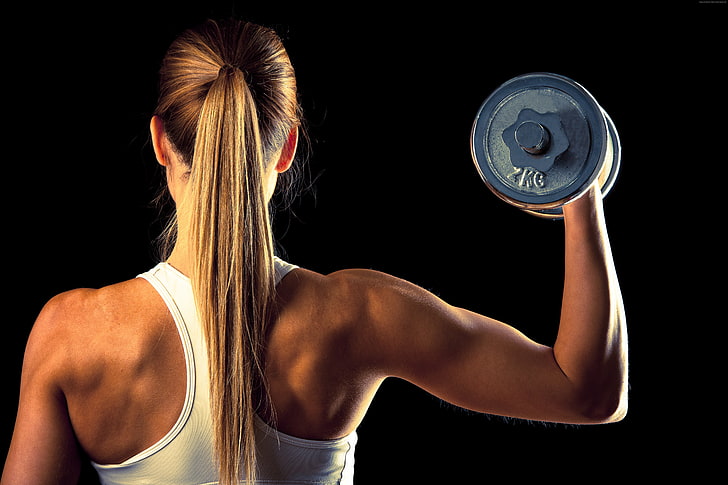Muscle Activation Techniques: Enhancing Mobility and Strength in Training
Muscle Activation Techniques: Enhancing Mobility and Strength in Training
Blog Article

In the world of fitness, achieving optimal performance requires more than just dedication and hard work. Personal training has evolved to incorporate various methodologies that enhance physical capabilities, and one such approach gaining traction is Muscle Activation Techniques. These techniques focus on improving muscle function and firing patterns, leading to greater mobility and strength during workouts. By integrating these methods into personal training programs, trainers can help clients break through plateaus and achieve their fitness goals more effectively.
Reserve Your Spot
Understanding how muscles activate and interact during movement is crucial for anyone looking to maximize their training results. Muscle Activation Techniques prioritize targeting underactive muscle groups to ensure overall balance and effectiveness in workouts. This approach not only aids in injury prevention but also enhances mobility, allowing individuals to perform exercises with better form and efficiency. As personal trainers become more adept at applying these techniques, clients can experience improved performance and a more fulfilling fitness journey.
Understanding Muscle Activation Techniques
Muscle Activation Techniques, or MAT, are specialized methods used to improve muscle function and enhance overall physical performance. This approach focuses on assessing and correcting muscle imbalances, which can lead to improved mobility and increased strength. By targeting specific muscles that may be underactive or overactive, individuals can experience a more effective training routine, enabling them to reach their fitness goals more efficiently.
One of the main principles behind MAT is the belief that proper muscle activation is crucial for optimal movement. Many people experience limitations in their range of motion or strength due to certain muscles not firing as they should. Muscle Activation Techniques involve a series of assessments and hands-on techniques designed to identify these discrepancies. By stimulating the nervous system to activate the underperforming muscles, practitioners can help restore proper alignment and function.
Incorporating Muscle Activation Techniques into personal training programs offers a distinct advantage. Trainers who are knowledgeable in MAT can provide tailored sessions that address individual needs and challenges. This personalized approach not only enhances the effectiveness of workouts but also reduces the risk of injury, promoting longevity in training and physical activities. As clients develop better muscle coordination and strength, they often find that their overall performance improves significantly.
Benefits of Muscle Activation in Personal Training
Muscle Activation Techniques play a crucial role in personal training by preparing the body for optimal performance. By focusing on specific muscle groups, trainers can ensure that these muscles are primed and ready for activity, leading to improved strength and endurance. This preparation not only enhances overall performance during workouts but also contributes to injury prevention by ensuring that the right muscles are engaged at the right times.
Another significant benefit is the customization of training programs. Personal trainers can use muscle activation techniques to tailor workouts to an individual’s specific needs and weaknesses. This approach allows for a more personalized experience, helping clients achieve their goals more effectively. By addressing muscles that may be underactive or imbalanced, trainers can create targeted exercises that promote better alignment, functional movement, and overall body mechanics.
Finally, muscle activation enhances the mind-body connection, which is vital for effective training. When clients engage in muscle activation routines, they become more aware of their body’s movements and capabilities. This heightened awareness leads to improved focus during workouts and a better understanding of how to engage muscles effectively. As clients learn to activate their muscles intentionally, they develop greater control and confidence in their training, resulting in a more rewarding fitness journey.
Implementing Muscle Activation Techniques in Workouts
Integrating Muscle Activation Techniques into personal training routines can significantly enhance performance and overall results. To begin, personal trainers should assess the individual needs of their clients, focusing on identifying muscle imbalances and weaknesses. This assessment allows trainers to tailor activation exercises that specifically target underactive muscles before advancing to more complex movements. For instance, using exercises such as glute bridges or banded lateral walks can effectively activate the glutes and improve stability, which is crucial for lower body workouts.
Once the specific muscle groups are identified, trainers can incorporate activation techniques into the warm-up phase of workouts. A dynamic warm-up that includes targeted activation moves can prepare the body for more strenuous exercises ahead. For example, combining mobility exercises with muscle activation can ensure that the primary muscles used in the workout are adequately engaged. This not only helps in maximizing strength and power during the main lifts but also minimizes the risk of injury by promoting proper form and muscle coordination.
After incorporating muscle activation into the warm-up, it is essential to continue monitoring the effectiveness of these techniques throughout the training session. Trainers should encourage clients to remain mindful of their muscle activation during lifts, reminding them to engage the targeted muscles consistently. Feedback through verbal cues and visual demonstrations can reinforce proper technique, ensuring that clients are optimizing their performance. As a result, regular implementation of these techniques fosters improved mobility, strength, and overall athletic development.
Report this page